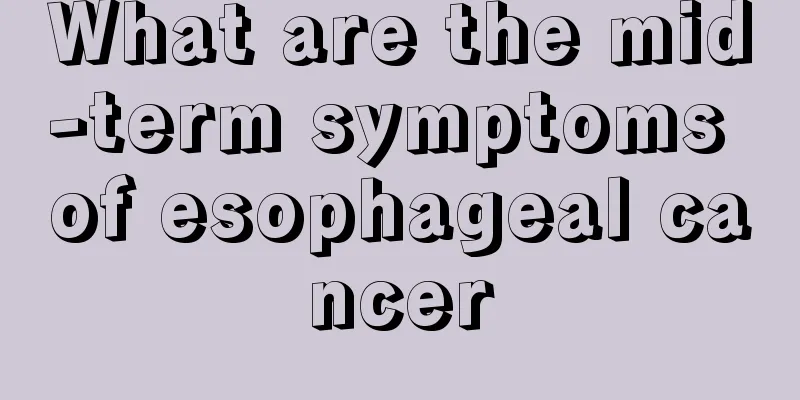How to improve a slow heartbeat

|
People's heart rate is fixed, and it is normal for it to fluctuate within a certain range. But some people's heart rate is always slow. What are the reasons for this? We know that some athletes' heart rates will decrease through long-term exercise, which is normal. If a normal person still has a slow heart rate without any physical exercise, it requires attention. So, what are the causes of a slow heartbeat? 1. First, you should check your heart rate and pulse rhythm. If it is too slow or irregular, you should seek medical treatment. A slow heartbeat is often accompanied by fatigue and shortness of breath. You should stop strenuous exercise immediately. You can soak and take ginseng tablets or salvia tablets. If the symptoms of dizziness and fatigue are severe and do not improve, you should seek medical treatment. Generally, as long as you don't feel unwell or weak, you don't need to take drugs to increase your heart rate. However, you should always have drugs that can increase your heart rate, such as atropine sulfate, isoproterenol hydrochloride, ephedrine, long-acting nifedipine, etc. These can be used appropriately if the heart rate is found to be too low. Avoid taking drugs that can slow down your heart rate, such as metoprolol tartrate and propranolol, to avoid accidents. If syncope occurs repeatedly and is not effectively controlled by medication, consideration should be given to implanting a permanent artificial pacemaker. Patients with slow heartbeat should eat more foods rich in protein , vitamins and easily digestible foods, such as beef, fish, shrimp, chicken, turtle, milk, etc.; eat more vegetables and fruits such as green vegetables, spinach, watermelon, tomatoes, grapes, lemon, pears, apples, etc. Eat less spicy and irritating foods, such as onions, ginger, garlic, pepper, pickles, etc. In addition, you should participate in sports in moderation and do what you can according to your own situation. You can do some exercises such as cardiotonic exercises, Tai Chi, and cycling. Symptoms of bradycardia Electrocardiogram examination: An adult's sinus rhythm frequency lower than 60 beats/minute is called sinus bradycardia. Sinus bradycardia is often accompanied by sinus arrhythmia (i.e. the difference between different PP intervals is greater than 0.12s). ECG characteristics The ECG characteristics of sinus bradycardia are as follows: 1. The P wave is the "sinus P wave" emitted by the sinoatrial node. The P waves appear in sequence. The P wave is upright in leads I, II, Avf, and V3-V5, and inverted in lead Avr. 2. The frequency of P waves is less than 60 times/minute, generally between 40 and 60 times/minute. 3. The PR interval is greater than 0.12 seconds. In sinus bradycardia, the T wave amplitude is often low, the QT interval is longer than usual, and the U wave is sometimes prominent. 4. The electrocardiographic characteristics of sinus bradycardia are also often accompanied by sinus arrhythmia. |
<<: Precautions for oxygen delivery
>>: Things to note 6 hours after lumbar puncture
Recommend
Can ginger reduce belly fat?
Ginger itself has certain effects in promoting di...
Is it easy to get pregnant if you use a pillow to support your buttocks?
In life, many women are very concerned about the ...
Can cafe au lait spots be removed?
Many people have found some coffee-colored spots ...
The harm of mud
In life, many people have their own ways of takin...
How to use a steam iron
Nowadays, people love beauty more and more, and t...
I fart over 100 times a day
If a person farts in public and that fart is smel...
How to treat cystitis effectively?
Cystitis is a urinary and reproductive disease th...
How is liver cancer spread? Know the three ways liver cancer spreads early
For people who have liver cancer patients at home...
Causes, inspection methods and relief methods of cervical stiffness
Cervical stiffness is a very common disease, espe...
How to deal with nasopharyngeal cancer with bloodshot nose
How to treat nasopharyngeal cancer? Cancer is a w...
Will renal hamartoma cause swollen feet? Learn about several atypical symptoms of renal hamartoma
Renal hamartoma generally does not cause swollen ...
Are good cigarettes and bad cigarettes equally toxic?
Smoking is a habit of many people. Although every...
Statistics show that more than 70% of laryngeal cancer patients are smokers
The number of laryngeal cancer patients is increa...
Can food coloring be used to make lipstick?
When women put on makeup, the most indispensable ...
Is it OK to always wash your face with sulfur soap?
Sulfur soap is a cleaning product that we often u...









